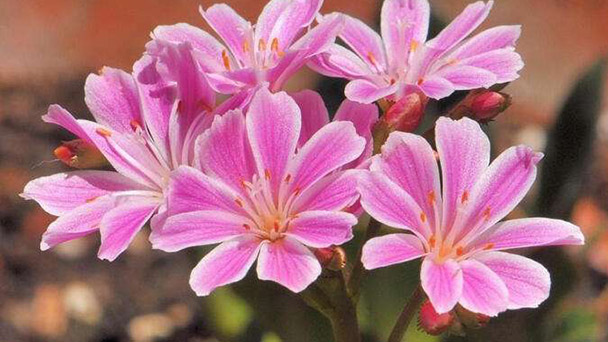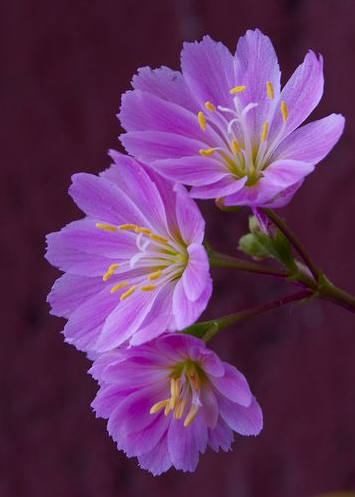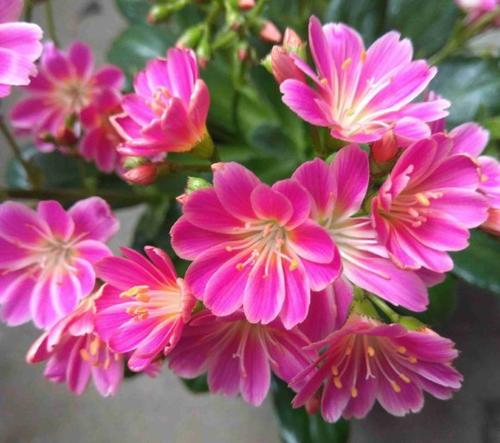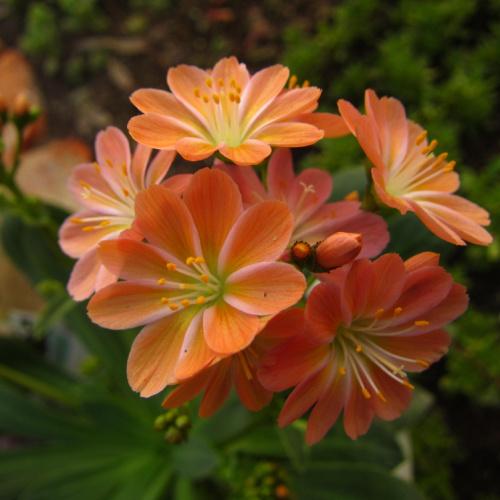How to grow Lewisia cotyledon
Written by Maggie
Nov 12 2020

Many friends are deeply attracted by Lewisia cotyledon after seeing it, but we know that succulents are not so easy to feed, which is why many people want to raise them but dare not raise them. So, today the editor will tell you how to raise Lewisia cotyledon, and those who are interested should not miss it.
Lewisia cotyledon picture

Lewisia cotyledon planting
If flower lovers want to grow lewisia cotyledon, they can do it before the Tomb Sweeping Day. Choose a slightly acidic soil and sow the seeds in the pots after they are moist. In order to prevent low survival rate, you can sown more densely when sowing, and then wait for the seedlings to grow before screening and thinning. After sowing, remember to cover the top of the flower pot with a layer of soil to moisturize and promote germination.
This method is more suitable for patience friends, after all, it takes a long process from seed to blooming. If you are an eager friend who wants to see beautiful flowers, you can directly buy the seedlings of Lewisia cotyledon, you only need to take good care of them to see the flowers bloom. Let's take a look at the maintenance method of Lewisia cotyledon.
Maintenance of Lewisia cotyledon
1. Watering
Lewisia cotyledon is a succulent plant. Although the leaves are not plump and thick like other succulents, they are still tender and juicy. Therefore, the amount of watering is very important for the growth of Lewisia cotyledon. Many people think that lewisia cotyledon should be watered more in the hot summer, but in fact, it is necessary to reduce watering and keep the soil a little dry, otherwise it is easy to cause root rot. You don't need to be too diligent in watering at ordinary times, just see dry and wet.
If the leaves of Lewisia cotyledon are falling off due to improper watering, don't worry too much, just change the frequency of watering. Because this will not affect the growth of the plant, the fallen leaves will grow out the following spring.

2. Fertilization
Raising Lewisia cotyledon is a fat-loving plant and requires relatively adequate nutritional conditions, otherwise it is prone to poor growth. Insufficient nutrients, let alone flowers, even leaves are scary, so do a good job of fertilizing.
Lewisia cotyledon will enter the growth phase from May, and fertilization has been performed every half month since then. Nitrogen is the main fertilizer before flowering, and phosphorus and potassium are added after flowering. When fertilizing, use diluted liquid fertilizer to avoid excessive fertilization. Excessive fertilization will cause weeds to grow, and will cause Lewisia cotyledon to grow leaves and not bloom. Watering can be done the next day after fertilization. On the one hand, it can promote the absorption of nutrients, and on the other hand, it can avoid fertilizer damage caused by excessive fertilization.
3. Light
Lewisia cotyledon is a plant that likes sunlight, so during the growth period of Lewisia cotyledon, it is necessary to ensure that Lewisia cotyledon can receive enough light, and it can be properly shaded at noon in summer when the sun is strong and high temperature. Avoid direct sunlight to the plant.
4. Trim
Lewisia cotyledon has lotus-shaped flower leaves with many flower stems drawn from the middle of the leaves. If you want Lewisia cotyledon to bloom in the second year, cut off the flower stems in time after blooming, and trim the branches and leaves appropriately to cut off the densely grown plants to increase the light transmittance of the plants. However, some single-petaled Luwei flowers continue to be shortened to promote multiple branches and bloom more.

5. Antifreeze
Lewisia cotyledon has poor cold resistance, so move it indoors for maintenance in time after the temperature drops. Place it in a warm place where the room is sunny, and control the temperature in the room at 3~5℃. For friends with low indoor temperature in winter, it is recommended to put a plastic bag on the flowerpot, which can play a good role in heat preservation, but the plastic bag should be opened regularly to let the plants breathe.
Lewisia cotyledon can not only be used as a potted plant, friends who have rockery and stone mountains in the house can put some seeds in the gap, so that they can modify these links when the Lewisia cotyledon grows.
Latest Updated
- Benefits of Bugleweed - 7 Science-backed Health Benefits
- Bugleweed Dangers & Side Effects - Is It Poisonous?
- How to Plant Evergreen Trees - What You Should Know
- When to Plant Evergreens - Grow Guide for Evergreen Trees
- 12 Wonderful Evergreen Shrubs for Your Garden
- 12 Popular Evergreen Plants with Pictures for Beginners
- When And How To Prune A Lilac Bush Like a Pro
- How to Grow & Care for Lilac Vine (Hardenbergia Violacea)
- Japanese Lilac Tree (Syringa Reticulata) Care & Propagation Guide
- Shumard Oak Pros and Cons - What to Know
Popular Articles
- Winter maintenance of Antirrhinum Majus
- How to Grow Terminalia Mantaly Tree
- How to Grow and Care for Crossostephium Chinense
- How to grow Antirrhinum Majus in spring
- Peristeria Elata (Dove Orchid) Profile: Info & Care Guide
- Underwatered Snake Plant (Sansevieria Trifasciata) - Signs And How To Fix
- How to Care for Brazilian Jasmine Plant (Mandevilla Sanderi)
- How to Grow & Care for Graptopetalum Purple Delight in Summer
- Rosa Chinensis (China Rose): Plant Growing & Care Tips
- How to Care for Baby Sun Rose (Aptenia Cordifolia)